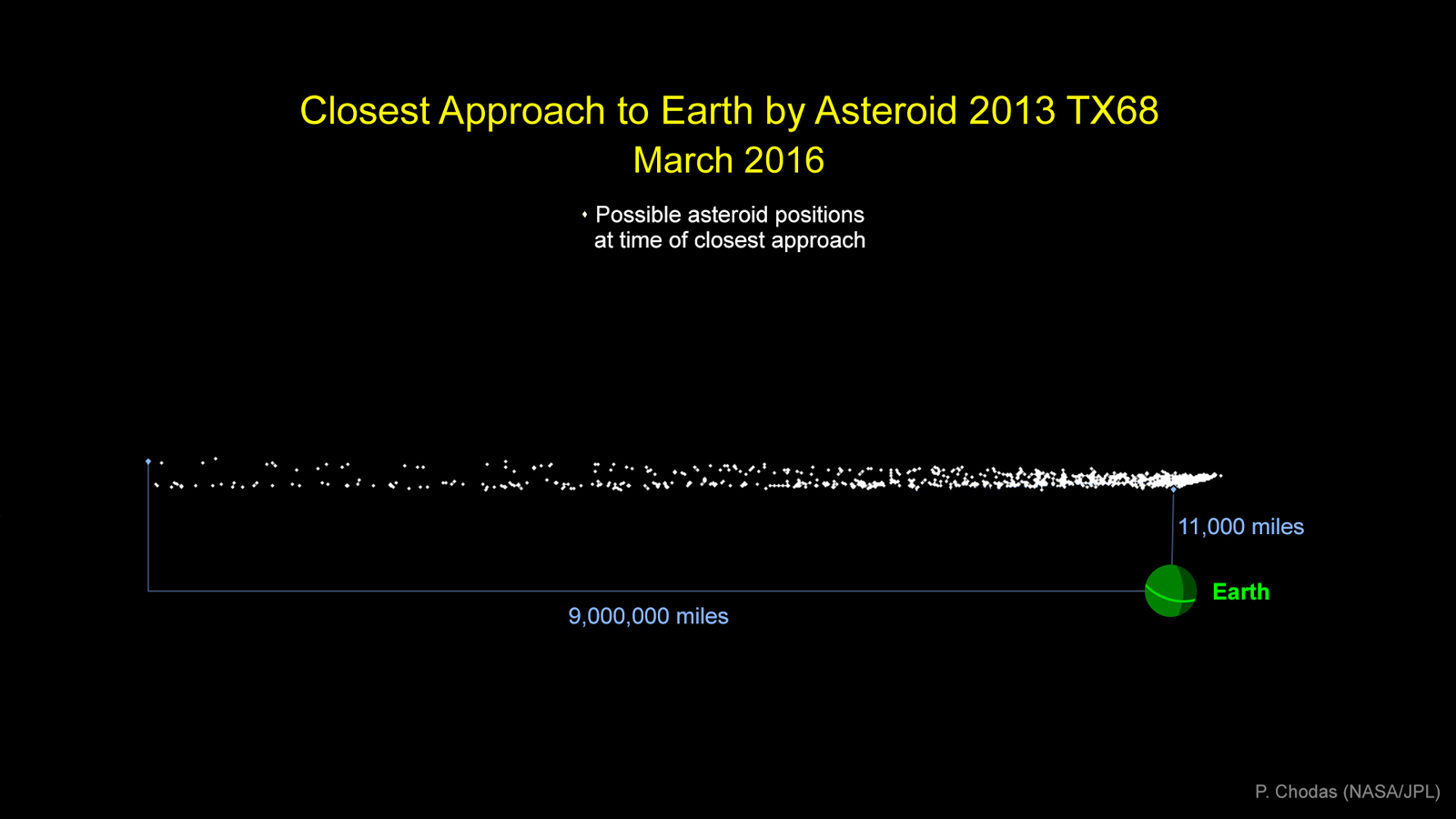The small asteroid 2013 TX68 will fly by our planet again on March 5, 2016.
But scientists are unable to calculate at which distance… As far out as 9 million miles (14 million kilometers) or as close as 11,000 miles (17,000 kilometers).
However, there is no possibility that this object could impact Earth during the flyby next month.

Asteroid 2013 TX68 is estimated to be about 100 feet (30 meters) in diameter. If it were to enter Earth’s atmosphere, it would likely produce an air burst with about twice the energy of the Chelyabinsk event.
The Near Earth Object (NEO) was discovered by the NASA-funded Catalina Sky Survey on Oct. 6, 2013, as it approached Earth on the nighttime side. After three days of tracking, the asteroid passed into the daytime sky and could no longer be observed.
The variation in distance is thus due to the wide range of possible trajectories for this object, since it was tracked for only a short time after discovery.













[…] On March 22 2016, Comet P/2016 BA14 (PANSTARRS) is set to pass by Earth at a distance of 2.1 million miles (3.5 million km). This is a record-breaking approach to Earth for a comet as it will be the closest known comet flyby of the last 230 hundred years. The latest distance record for a comet flyby was set in 1983 as comet IRAS-Araki-Alcock flew by Earth at 2.9 million miles (4.7 million km). Meanwhile, a small asteroid will buzz Earth on March 5, 2016. […]